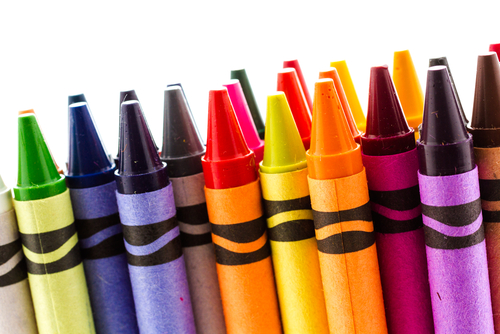You can buy a box of Crayola® crayons in 152 colors today, but way back in 1903, they only came in eight colors. And that first-ever box of Crayola® brand crayons was a huge improvement over the first crayons ever sold, which only came in black….
Wax crayons were mostly used for industrial purposes until cousins Edwin Binney and Harold Smith introduced their brightly colored crayons for kids. Edwin’s wife, Alice, made up the name Crayola® by combining “craie” (French for chalk) with “oleaginous” (which means oily). In other words, oily chalk!
It’s hard to understand just how different modern crayons are from their ancestors without a look at the history of the crayon. In 1864 Edwin’s dad, Joseph Binney, started the Peekskill Chemical Works in upstate New York. The firm made charcoal and lamp black, a black pigment made from the soot left over when oil is burnt.
When the two cousins took over in 1885, they started making new things, like a red pigment for barn paints and a carbon black that made rubber tires stronger. They made a number of industrial products, but from 1900 to 1902, they started making pencils and dustless chalk for school blackboards.
Colored crayons were a natural next step. But the original pigments they had used were not safe for kids, so they developed crayons that would be safe if swallowed. The first box they sold — the one with eight colors — cost just one nickel.
Over the years, as the company has grown, it has introduced more than 400 different colors. You can find metallic crayons, crayons with glitter in them, crayons that smell like flavors, crayons that wash out of clothes, and even egg-shaped crayons.
Nowadays, plenty of other companies make colored crayons for children too.

